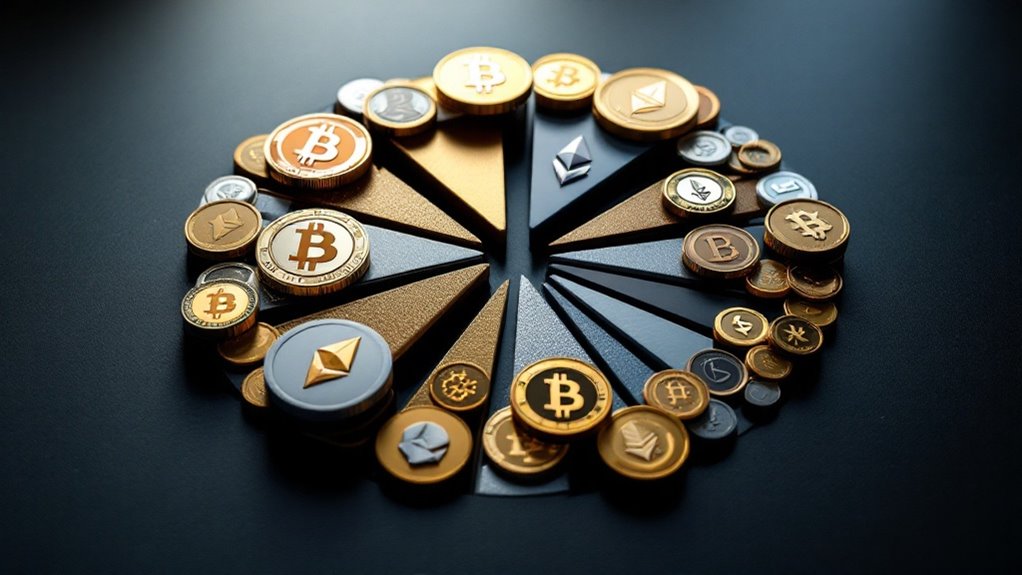Polkadot is a groundbreaking blockchain platform that connects multiple specialized chains into one unified network, much like a digital highway system linking different cities. Launched in 2020 by Ethereum co-founder Gavin Wood, it processes over 1,000 transactions per second through its innovative Relay Chain architecture. The platform's native DOT token powers governance, staking, and parachain auctions, while its heterogeneous sharding model enables each chain to excel at specific tasks. This next-generation ecosystem holds the keys to blockchain's interconnected future.

While blockchain technology continues to evolve at a dizzying pace, Polkadot emerges as a groundbreaking protocol that weaves together multiple specialized blockchains into a seamless digital tapestry. Launched in 2020 by Ethereum co-founder Gavin Wood, this next-generation platform tackles the thorny challenges of interoperability, scalability, and shared security that have long plagued the blockchain landscape.
At its heart beats the Relay Chain, orchestrating a symphony of specialized blockchains called parachains, each dancing to its own unique rhythm while maintaining perfect harmony with the whole. Through its nominated proof-of-stake consensus mechanism, Polkadot processes over 1,000 transactions per second, with the potential to scale up to a mind-bending million transactions when pushed to its theoretical limits. The network's proof-of-stake system enables validators to secure transactions by staking DOT tokens. Similar to Ethereum's approach, the smart contracts execute automatically on the network, ensuring transparent and secure transactions.
Like a grand conductor, Polkadot's Relay Chain directs its parachain orchestra, creating a blockchain symphony of unprecedented speed and scale.
The native DOT token serves as both the conductor's baton and the orchestra's lifeblood, enabling holders to participate in governance decisions, stake their claims in the network's security, and bid for coveted parachain slots. The project has achieved remarkable success with a significant market cap of $6.319 billion. Like a digital democracy in motion, the platform's transparent governance system allows its community of over 1.3 million members to shape its evolution through proposals and votes.
Perhaps most intriguingly, Polkadot's heterogeneous sharding approach turns the traditional one-size-fits-all blockchain model on its head. Each parachain can specialize in specific tasks while benefiting from the Relay Chain's robust security umbrella, much like specialized organs working together within a living organism.
Through bridges and cross-consensus messaging, these chains can communicate not only with each other but also with external networks like Bitcoin and Ethereum.
As Polkadot strides into the future with its 2.0 upgrade on the horizon, it continues to push the boundaries of what's possible in the blockchain domain. With innovations like Agile Coretime for flexible resource allocation and a growing ecosystem of decentralized applications, the protocol stands poised to reshape how we think about blockchain interconnectivity.
In a world increasingly hungry for seamless digital interactions, Polkadot's vision of a unified, scalable blockchain network feels less like science fiction and more like an inevitable evolution.
Frequently Asked Questions
How Long Does It Take to Become a Polkadot Validator?
Becoming a Polkadot validator requires several days for node synchronization, meeting substantial hardware requirements, securing the minimum stake of 1,159,434 DOT, and waiting through a queue period before active validation begins.
Can I Stake Polkadot Tokens Directly From My Hardware Wallet?
Yes, DOT tokens can be staked directly from hardware wallets like Ledger through Ledger Live or the Polkadot Staking Dashboard. The process requires installing the Polkadot app and maintaining a minimum stake of 254 DOT.
What Happens to DOT Rewards During a Parachain Auction?
During parachain auctions, DOT tokens are locked and cannot earn staking rewards. Contributors receive project-specific rewards instead, typically in the form of the parachain's native tokens, based on their contribution amount.
Which Exchanges Offer Polkadot Futures Trading?
Major exchanges offering Polkadot futures trading include Binance, Kraken, OKX, and Bybit. Specialized platforms like Deribit, Delta Exchange, MEXC, and FameEX also provide DOT futures with varying leverage options and features.
How Does Polkadot's Governance Model Compare to Ethereum's?
Polkadot employs formal on-chain governance with direct token holder voting and automatic execution, while Ethereum uses informal off-chain processes through EIPs and community consensus, requiring manual implementation through client software updates.









